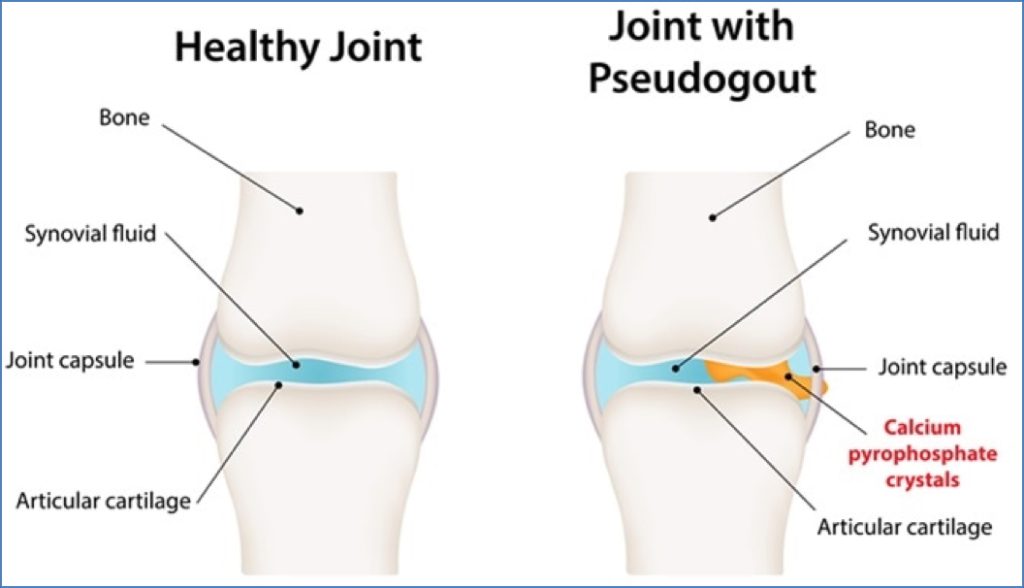Table of Contents
Overview – Pseudogout
Pseudogout, also known as chondrocalcinosis, is a crystal-induced arthritis caused by calcium pyrophosphate deposition (CPPD) in joint cartilage. Though often overshadowed by gout, pseudogout is actually more prevalent and commonly affects the elderly. It mimics the presentation of gout or septic arthritis and primarily targets large joints such as the knees and wrists. Timely differentiation is essential for appropriate management and to avoid unnecessary antibiotics or invasive procedures.
Definition
Pseudogout is an inflammatory arthritis due to calcium pyrophosphate crystal deposition in articular cartilage, often leading to joint pain, swelling, and inflammation.
Aetiology
- Metabolic Associations:
- Hyperparathyroidism
- Hypomagnesemia
- Diabetes Mellitus
- Haemochromatosis
- Epidemiology:
- Common in elderly patients
- Triggers:
- Dehydration, acute illness, surgery, or trauma
Pathogenesis
- Deposition of calcium pyrophosphate dihydrate crystals in joint cartilage
- Leads to chondrocalcinosis, joint inflammation, and pain

Morphology
- Macro:
- Red, hot, swollen joints – often clinically indistinguishable from gout
- Micro:
- Rhomboid-shaped, weakly positively birefringent crystals (under polarised light)
Clinical Features
- Painful polyarticular arthritis
- Common joints: Knees, wrists, hips, feet
- Duration: Self-limiting, typically resolving in up to 3 weeks
- May resemble gout or septic arthritis
Investigations
- X-Ray:
- Chondrocalcinosis (linear calcification in cartilage)
- Joint aspiration:
- Calcium pyrophosphate crystals
- Rule out:
- Septic arthritis
- Gout (urate crystals)
Management
- Joint aspiration (for relief and diagnosis)
- Rest and supportive care
- NSAIDs
- Intra-articular corticosteroids to reduce inflammation
Complications
- Up to 50% develop secondary osteoarthritis over time
Summary – Pseudogout
Pseudogout, or chondrocalcinosis, is a crystal-induced arthritis caused by calcium pyrophosphate crystal deposition, presenting with painful inflammation of large joints such as the knees and wrists. It is commonly seen in the elderly and must be differentiated from gout and septic arthritis. Treatment includes NSAIDs, corticosteroids, and aspiration for symptomatic relief. For a broader context, see our Musculoskeletal Overview page.